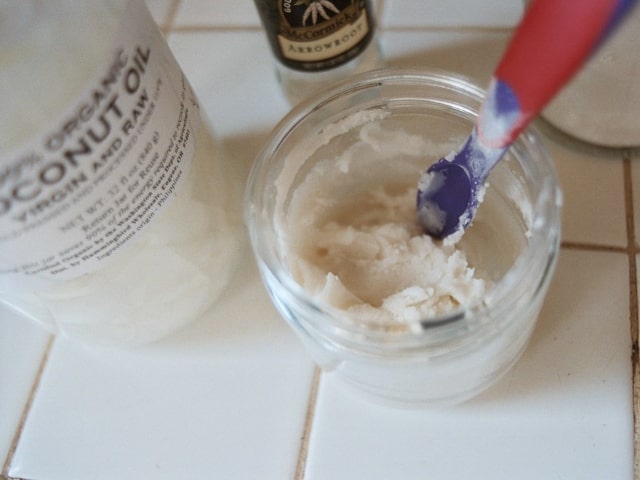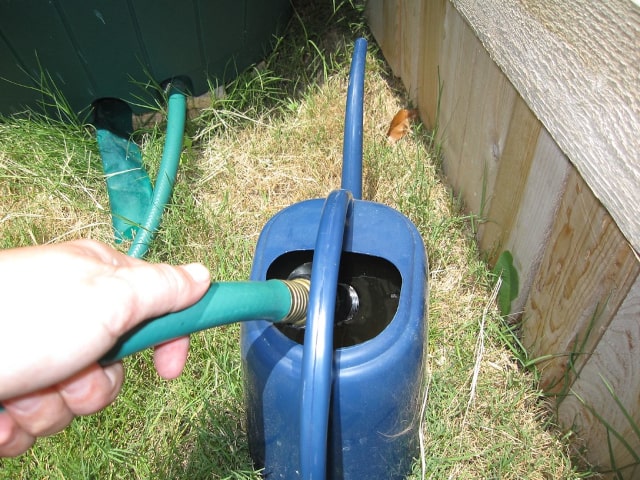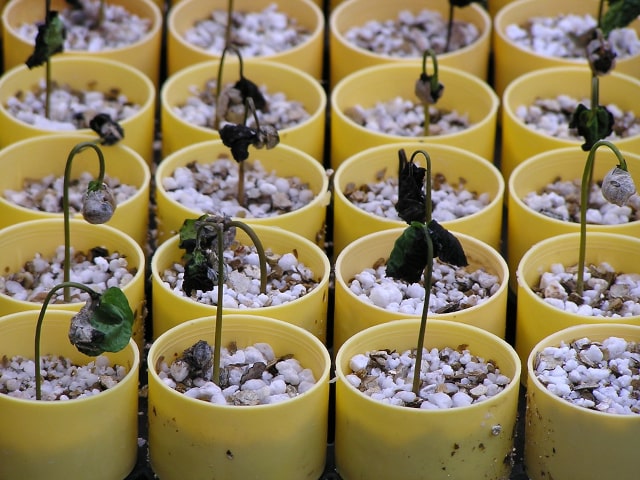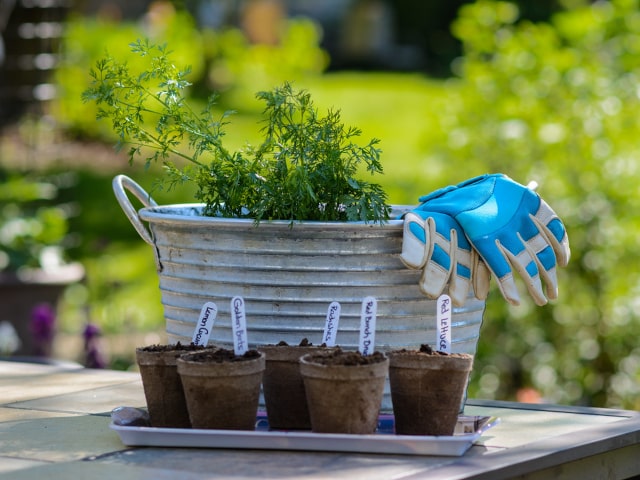
Consistent, even soil temperature is vital for the wellbeing of your seeds and seedlings. Good temperature is important for more reasons than simply getting a jumpstart on the season in the early spring. It can improve the condition of your plants and make your seeds germinate better and grow into strong seedlings.
In order to maintain a good soil temperature in the cold times, it's important to keep your soil and your seeds warm at all times. A well-built bottom heating mat can help you a lot to keep your seeds and seedlings warm. This is a convenient way to maintain a desirable temperature your plants need.
The Best Way to Maintain Temperature
The way you choose to keep your seeds and new seedlings is vital for their growth and development. Temperature plays an important role in this process. Many people have specialized "plant rooms" in their homes made for plants and gardening. It doesn't have to be anything big or special. Just a small place that is well-insulated and with lots of light. It's best if the chosen room has windows and enough light for your plants to thrive.
However, even if you build a good insulated room, there is also a possibility that the temperature won't be adequate nor suitable for your plants. Sometimes, temperatures go way down during night, so it might not be the best environment for your plants. In case the temperature during night drops to about 50 degrees F, that is not problematic for the adult plants, but it might prevent germination so it's not necessarily good for seeds and new seedlings.
In this scenario, having an additional heating source for the seeds and seedlings is very helpful. Bottom heating mats and other similar devices can help a lot. There are many commercial options you can buy at specialized stores (such as local garden centers), but they tend to be expensive. Commercial kits can be helpful but what if you don't want to spend so much money on them?
A good, low-cost alternative is to simply make your own, homemade heating mats for your seeds and seedlings.
If you wish to build your own heating mats for the plants, you need to pay attention on certain requirements. It's very important to stay safe and to know what kind of heater will benefit your plants:
- Safe. You have to make sure that the heating mat is safe and won't cause an electrical shock or a fire hazard.
- Simple to build. It has to be easy to construct even by inexperienced users.
- Large enough. Your heating mat has to be big enough to help all your seeds and seedlings.
- Affordable. You don't want to spend so much money on this homemade device.
Before you start, keep in mind that these are just guidelines. If you are not sure what to do, consult a professional. It's best to ask someone who is knowledgeable about electricity and other things described in this guideline. You don't want to cause damage to you home. If you wish to proceed you agree not to hold us accountable for any use of the information provided.
With this in mind, here is a quick way to make some heating mats for your seeds and seedlings.
Building the Heating System
There are some things you need to provide to build your homemade heating system. Find a nice shelf that is large enough to accommodate your plants. A 2x8 feet shelf might do, but it depends on the size and number of your seedlings.
Put a 1/2 inch layer of Styrofoam insulation board over the shelf. This will be used for keeping the temperature consistent. Insulation is very important when it comes to maintaining a good temperature.
After putting the Styrofoam, you should loosely fasten some rope lights over that. For a shelf of this size, you will probably need several 20' rope lights (2-3). Don't overdo it. Usually, two is enough to provide adequate temperature for this size of the shelf.
When choosing rope lights, make sure they are approved for exterior use and also double insulated. This type of lights are safe for wet locations as well as direct contact with flammable materials such as wood. They get only slightly warm, so they are safer to use than the regular lights. For this reason, it's important to make sure that the rope lights you choose are approved for exterior use and double insulated. You don't want to cause shock or a fire hazard.
When using any type of electrical equipment, such as rope lights, it's important to use GFI protected outlets or plug bars. This is vital to use anywhere where water and electricity come in close proximity.
These rope lights are rated for exterior use and are double insulated. They are safe for wet locations and direct contact with flammable materials like wood because they only get slightly warm. Neither a shock nor fire hazard. They were used at one time for outside lighting but hadn't been used in a couple of years. However it is probably always a good idea to use GFI protected outlets or plug bars anywhere that electricity and water come in close proximity.
The best way to fasten down the rope lights is to use screws and wire ties with holes made for this purpose. Zip ties with such holes are very handy. You can find them in the electrical wiring section at your local home improvement store.
After all of this, put in strips of 1inch insulation board. They will act as spacers. Finally, you may top all of this with a layer of 1/2 inch drywall. Drywall is a good choice because it's somewhat fire resistant and it also offers some great thermal properties. It means the heat produced will be even and nice, without any potential hot and cold spots.
However, keep in mind that it won't be water proof, so it's advisable to top it all off with some vinyl or a similar material. Leftover sheet, poo liner, shower curtain, plastic sheet or vinyl flooring makes a good material for making is waterproof.
In summary, you will have (from the top to bottom): 1/2" Drywall rope lights with spacers made of 1" EPS board, 1/2" Styrofoam and 1/2" wooden shelf on the bottom. You should position all of this on some barrels (or similar containers). It' important to keep this system up and not on the floor. The containers should serve as a thermal mass to moderate the temperature in the room. You may also use wood for all the parts, but since wood is flammable, it's safer to use material that is not so easily flammable.
Keep in mind that most of the heat coming from the rope lights will be directed by the insulation to go up through the seed starter, keeping your seeds and seedlings warm.
Additional Information
There are some things to keep in mind if you want to use this type of a heating system in your home:
- The surface of the finished system (the bench) will be a bit warm to the touch. In a way, that is the whole point. It is used to keep the soil warm and make it feel like on a sunny spring day.
- You can adjust the size of the bench depending on the number of seeds and seedlings you wish to grow.
- You should keep the lights on for as long as your plants need it. It's best to connect the lights to a timer that will keep the lights on for the right amount of time during the day.
- If you wish to use fluorescent lights for starting plants, keep in mind that the light should be kept very close to the soil or tops of the plants. This is important to prevent them from becoming leggy.
- The goal is to keep the air temperature in the room above the 55 degrees F.
- Once the seedlings grow to be a few inches tall (which will happen after about a month), it's best to slowly move them out to a colder space and eventually out to the garden or greenhouse (depending on the plant type). It's important to make your seedlings hardy so they can survive outside.
- Another thing you can use to improve safety is to bed the rope lights in sand so they can be completely surrounded by fireproof thermal mass. You may also wish to bed the rope lights in drywall joint compound to achieve the same effect, but in case the rope lights die you will have a difficult time replacing them.
- Once again: Make sure to consult a specialist over the insulation and electrical issues. It's important to stay safe and not to cause any electrical shock or fire hazard. This is why it's vital to talk to a professional and ask them how to make your project safe and great for your home.
Photo credit: Tom Bridge




2 Comments
I don't know what rope lights are. During the holidays, the only lights I saw were LED lights.
I have tried this and found the polystyrene began to melt.